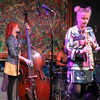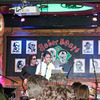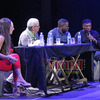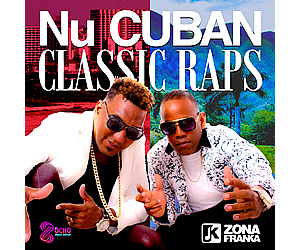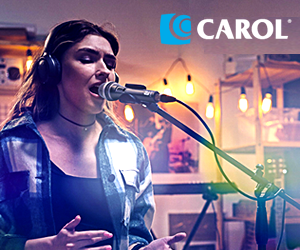Indice - Table of contents
New Stuff[hide]
Reportes: From The St... : Jazz Plaza ...
Fotos: Tom Ehrlich : Irakere 50th Annivers...
Fotos: Tom Ehrlich : Irakere
Resenas: Joey Altruda Presents: El Gran ...
Reportes: From The St... : Cubadisco 2...
Timbapedia: 09. Interviews -... : Carlos del Pino ...
Fotos: Tom Ehrlich : 2023 Monterey Jazz Fe...
Fotos: Tom Ehrlich : 2023 Monterey Jazz Fe...
Fotos: Tom Ehrlich : 2023 Monterey Jazz Fe...
Fotos: Tom Ehrlich : 2023 Monterey Jazz Fe...
Grupos: Tirso Duarte
Grupos: Tirso Duarte : Discography
Grupos: Charanga Habaner... : 8. El bla bla bla
Grupos: Pupy y los que S... : Tirso Duarte
Photos of the Day [hide]
Study - Timba Gears "Reelin' in the Gears" - Gears in Action: In the Studio - pt. 1
Gears in Action - pt. 1 - In the Studio
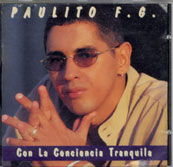 To get a feel for what gears really sound like, let's take Y San Toma qué, track 9 of "Con la conciencia tranquila" (Nueva Fania NF 108). This album was ranked #3 of all time by the readers of timba.com in our Awards section If you don't have it, como decimos en la Yuma, "get a life!" -- stop reading right now, buy the freaking CD, listen to it at least 20 times, and then come back and join the fiesta!
To get a feel for what gears really sound like, let's take Y San Toma qué, track 9 of "Con la conciencia tranquila" (Nueva Fania NF 108). This album was ranked #3 of all time by the readers of timba.com in our Awards section If you don't have it, como decimos en la Yuma, "get a life!" -- stop reading right now, buy the freaking CD, listen to it at least 20 times, and then come back and join the fiesta!
Listen & Purchase Con la conciencia tranquila
Later on we'll delve into several live performances recorded between late 1997 and late 1998, but first let's analyze the studio version. The montuno section begins at 1:32, and, ironically, the first gear is one that Paulito almost never used, although Issac Delgado used it on nearly every song. I call it "Piano Tumbao gear". In this gear, the piano switches to a new and especially catchy tumbao. To call attention to it, the bass drops out completely and the three percussionists play only improvised embellishments. The only time keeper is the clave pattern that the drummer plays on his jamblock. The piano tumbao in question is one of the many exquisite masterpieces of Timba demi-god Sergio Noroña. To hear more of this great pianist, check out Michel Maza's new CD, "Fieeeesta!".
1 - Piano Tumbao gear - 1:32 - click to listen
notes on audio examples:
1) each gear example starts in the previous section so you can hear the transition.
2) if you're unable to hear these streaming mp3 excerpts, try downloading and installing WinAmp.
The brilliance of La Élite is especially apparent in the way they get in and out of each gear. In this case, since it's the first gear after the cuerpo, Juan Ceruto's arrangement is designed to climax directly in Piano Tumbao gear -- no hand signal is necessary. In fact, there are no hand signals in any of the studio recordings, whose entire arrangements have been carefully worked out so that the track will be an acceptable length for airplay. We'll get to the hand signals and night to night variations in the live versions later on.
To avoid getting mired in musician-speak, let's count time from the dancers' perspective -- in basic steps (i.e. "1,2,3 - 5,6,7" -- one basic step=one clave). The Piano Tumbao section lasts 4 basic steps and on the fourth one, the rhythm section plays a bloque to transition to the next gear, which is called Marcha.
2 - bloque leading into Marcha gear
Marcha is the default gear -- every instrument plays its normal time-keeping role. Joel the bassist plays a tumbao which outlines the clave, Yoel the drummer plays his kick drum between the bass notes to create a contraclave effect and plays time with his bells, clave (jamblock) and timbales. Tomasito the conguero plays a steady marcha with a pattern of open tones designed to complement the coro and the bass, and Coqui the bongocero plays his hand bell just as he would in a normal salsa band. Aside from the cuerpo, this is as close as Timba gets to Salsa, but even here there are differences. The most fundamental is of course the presence of the kick drum which allows the bass to play an asymmetrical, clave-aligned pattern instead of the clave-neutral salsa tumbao. Another tasty delicacy of Timba is the "surprise bloque". Every band in every genre plays rhythmic breaks to get from one section to the next, but the Timberos also love to catch the listener off-guard by throwing them in after a section has begun. In the following example, you can hear the first coro "yo sé hay que dar, para tener, pero no se puede dar y dar, sin recoger", and then the surprise bloque as Paulito starts into his first guía.
3 - Marcha gear with surprise bloque
Marcha de Mambo is a variation of Marcha gear which is used when the horns come in. The overall volume and intensity increases, Yoel switches from bell to cymbal and there are lot more fills. In this group Yoel & Tomasito have worked it out so that the drums plays fills going into the phrases of the horns and the congas play a mini-solo right after the halfway point. If you listen carefully you can hear Tomás going wild just as the horns repeat their phrase. You can hear this same treatment (with different improvised solos, of course), on nearly every Paulito horn mambo.
4 - Marcha de Mambo with improvised conga and drum fills
Pedal is my favorite gear. It gets its name from the classical term "pedal tone". The lowest notes of a pipe organ (or B3 organ for that matter) are played with the feet and it's common in the music of Bach and others for the organist to hold down a low note for many measures while the music builds to its ultimate climax. In Paulito's music, Pedal is used for climaxes during the arrangement, rather than at the end. The Pedal treatment is reserved for the introduction of a particularly compelling new coro and often features a new and exciting piano tumbao as well. The bass plays long, powerful, sustained tones, switching notes no more often than every basic step or two. Paradoxically, the emotional intensity of the music is increased by the fact that all three percussionists play less. Like Piano Tumbao gear, all the percussion patterns stop except for the clave and kick drum, and the drummers play only embellishments and the special bloque that's written for each Pedal section.
The first Pedal section of Y San Toma qué introduces the second extraordinary Segio Noroña piano tumbao and one of Paulito's most unforgettable coros, "San Dame, San Dame, San Toma dónde está?.










